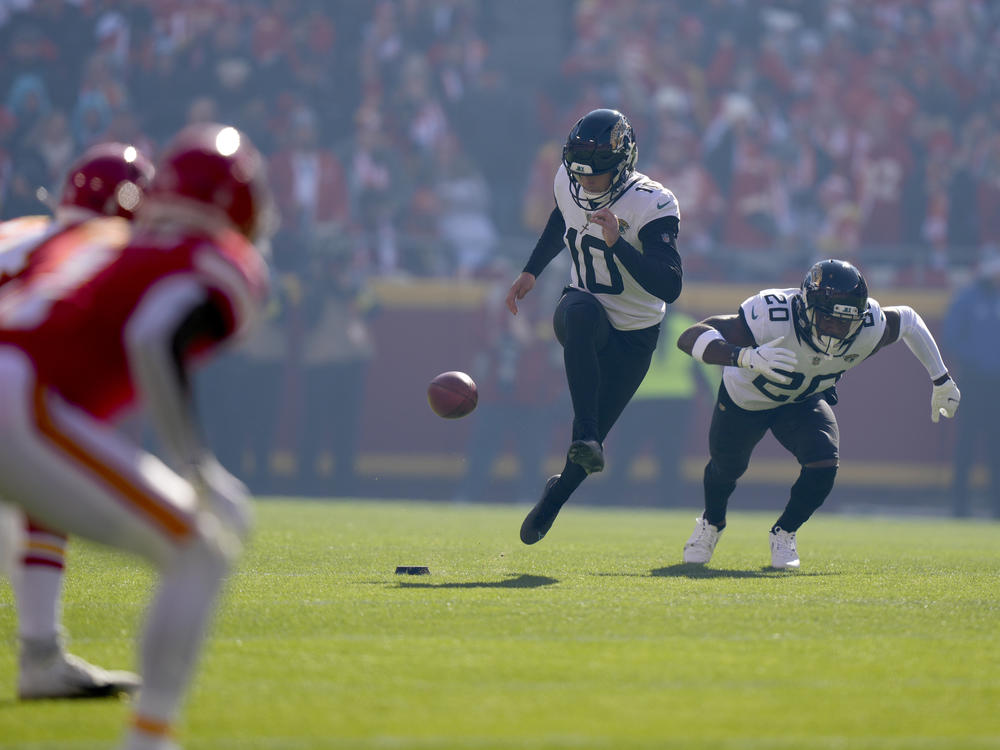Section Branding
Header Content
Kickoffs will look radically different in the NFL next year. Here's how and why
Primary Content
The upcoming NFL season will feature what may be the most significant change to gameplay in professional football in years: a dramatic alteration to rules around the kickoff, one of the game's most iconic plays.
Kickoffs, which occur about 10 times every NFL game and thousands of times over the course of each season, have long been the subject of scrutiny due to a heightened risk of injury for players.
But while alterations to kickoffs over the past decade or so helped make them safer, they had also made the play largely perfunctory.
At this week's annual meeting of NFL team owners, owners voted to radically alter the way kickoffs are executed in what officials say they hope will be a best-of-both-worlds approach designed to reduce injuries while making the play more exciting.
"It is an exciting day," said Darren Rizzi, the special teams coordinator for the New Orleans Saints, who helped develop the new rules. "We feel like we've revived a dying play."
Under the new rules, the kicking team's kicker will continue to kick from the 35-yard line. But rather than be flanked by his teammates, the rest of the kicking team will line up at their opponent's 40-yard line, eliminating the traditional running head start. The returning team will field up to two returners in the backfield, and the rest of the team will line up in a new "set up zone" between the 30- and 35-yard line.
Besides the kicker and returners, no players from either side will be allowed to move until a returner touches the ball or the ball hits the ground. Fair catches, in which a returner could signal that they would catch the ball but not attempt a return, will no longer be allowed.
Another major aspect of the change is the elimination of a team's ability to call a surprise onside kick, a special form of kickoff in which a team attempts to kick the ball to one of their own players. Because onside kicks are typically unsuccessful, they are usually relegated to desperation scenarios at the end of a game. But teams had occasionally opted to take their opponents by surprise by attempting an onside kick earlier in the game. That option is now gone, as teams must announce an onside kick attempt in advance.
Still, team officials felt that the change was worthwhile; the new rules were approved by a vote of 29-3.
"We feel like we've made this play a heckuva lot safer for the players. We're going to eliminate some of the big collisions," Rizzi said.
For years, as greater awareness of injuries have influenced football, kickoffs have been under the safety microscope. Players sprinting down the field would collide at high speeds, and injuries disproportionately occur during returns.
In response, in the 2010s, the league tweaked kickoff rules to reduce the likelihood of returns by incentivizing what are known as touchbacks.
When a kicker boots the ball into the endzone, the opposing team's returner can choose to kneel rather than attempt a return; the result is called a touchback, and the returning team would receive the ball at the 25-yard line. (Under the new rule, touchbacks will now be placed at the 30-yard line.)
A touchback occurs automatically if the ball sails out the back of the endzone entirely. After a rule change in 2011 that reduced the distance from the kickoff to the opposing end zone, the league reported that the number of concussions on kickoffs was reduced by 40%.
In the 2023 season, about three-quarters of all kickoffs resulted in a touchback, a dramatic reversal from the pre-2011 era, in which roughly 80% of kickoffs were returned.
The result: Players were safer, but the kickoff itself had largely become what team officials called a "dead play."
"I'm all for it," Kansas City Chiefs coach Andy Reid told the Associated Press. "You have 2,000 dead plays. Nobody wants to see that. It'll add excitement and newness."
The new kickoff rules were pioneered by the XFL, a minor professional football league that featured a variety of altered rules designed to make games faster and more exciting. (The league has since been folded into the USFL.)
The alteration is also expected to increase the value of special teams players — the players on any NFL squad who typically haven't yet made the cut for a full-time spot on an offensive or defensive lineup. For many players, a special teams position is a way to prove their worth on an NFL roster.

